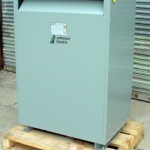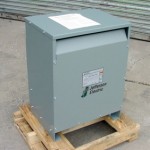Transformer Leak vs Production
What do you do if you have a 750 Kva oil filled transformer that has no valves, no gauges, is leaking oil and the owner tells you they can’t possibly do anything for weeks. But they want to know if there is enough oil left in the transformer to make it 45 days, because they can’t stop production. Production verses maintenance, it’s a familiar battle. The reality today is that production wins. One has to find “best fit” solutions. In this case, the transformer was only about 30 years old, so it wasn’t a total dinosaur. Why anyone would buy a naked transformer is the subject of another blog. Both the production manager and maintenance manager were actually worried about their jobs if they lost this transformer, so they were looking for some serious guidance from MIDWEST. They wanted to know if they should get a replacement oil filled transformer. We used a highly technical protocol to determine if the oil level was too low. We first made sure the old power transformer was properly grounded. Then we felt the case of the transformer and then the cooling tubes. Yes, the sophisticate instrument of choice was the human hand. All the cooling tubes were warm and the tank was slightly warmer than the cooling tubes. The heat distribution was as we would expect for a properly cooling old or new oil filled power transformer. We knew from the type of bushings that they extended below the oil level. The oil stain from the leak was fairly large, but it was caused by chronic weepage and not an aggressive leak. So MIDWEST’s opinion was the old obsolete naked power transformer would last until they could schedule repair. Ironically enough, the oil weepage was from the plug that was installed in place of a top valve. So they scheduled the repair per their production schedule. They didn’t need to replace this old oil filled power transformer after all. We repaired the leak, added valves and gauges, sampled the oil, added some new oil, and ran some transformer tests and all was well.
A very important note, MIDWEST made sure the transformer was grounded before touching it. This is an important safety tip. You do not want to become the transformer case ground. Electricity through your body will make you very unhappy.

